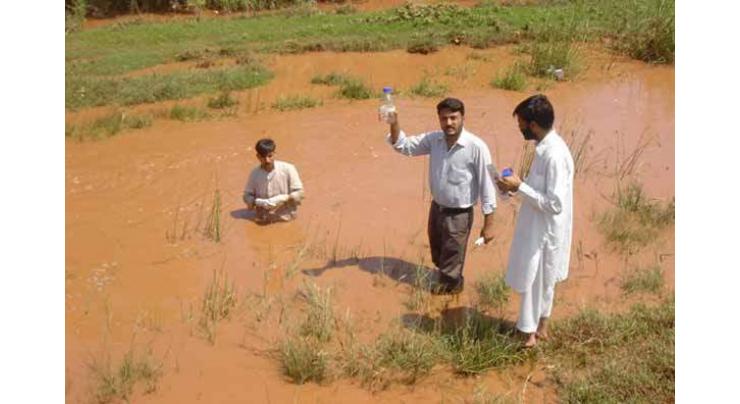
39,000 Sqr Kms 2D, 3D Seismic Surveys Completed To Map Natural Resources
Faizan Hashmi Published November 10, 2016 | 02:45 PM

ISLAMABAD, (UrduPoint / Pakistan Point News - 10th Nov, 2016 ) : The government has completed 2D and 3D seismic surveys of around 39,000 square kilometer areas to map existing potential of natural resources in different parts of the country during last three years.
"The current government during its tenure has so far completed 21,000 km 2D and 18,000 km 3D surveys to expdite oil and gas exploration activities in the potential areas," official sources in the Ministry of Petroleum and Natural Resources told APP.
Besides, they informed that the ministry had approved a proposal to acquire latest equipment worth Rs 415 million for mapping the country's hidden minerals and natural resources. "Under the proposal, Rs 415.807 million have been earmarked to acquire four drilling rigs and their accessories for the Geological Survey of Pakistan," official sources in the ministry told APP.
The Geological Survey of Pakistan (GSP), the sources said, was striving to explore natural resources for uplifting the national economy. They said the recent geological investigations had shown that 185 billion tons of coal reserves existed in different parts of the country, which could be used as a Primary and inexpensive source for power generation.
"More than 184 billion tons deposits are located in Sindh province, with Thar coal field being the largest followed by Thatta-Sonda, Lakhra and Jhimpir.
The coal is lignite to lignite-A to sub bituminous B&C in character with an average heating value of 6000 BTU/lb," they said.
Coal is primarily classified into four major categories, or 'ranks' like lignite, sub-bituminous, bituminous and anthracite. One of the most valuable content of coal is its carbon content which supplies most of its heating value.
The sources informed that further investigations were being carried out to explore and evaluate coal deposits in Musakheil, Kingri and Toisar Basin, Musakheil district, Balochistan. Answering a question, they said the mining and quarrying sector grew by 0.6 per cent in 2015-16.
"Estimates suggest there are copper reserves of 1.9 billion tons and 11.2 million ounces of gold in different localities." They admitted that the primary reason for not getting maximum benefit of the natural resources was the application of out-dated technologies, poor management and inadequate capital besides security situation in some areas where the bulk of the mineral resources were located.
The mineral sector of Pakistan is spread over 600,000 square kilometres and 92 known minerals, while 52 are commercially exploited. Presently, the sources said above 5,000 operational mines and 50,000 small and medium enterprises were producing average 68.52 million tons per year and providing direct employment to 300,000 workers.
Related Topics
Recent Stories

Experts raise concerns over introduction of 10-stick packs

Iranian president arrives in Karachi

Law Minister expresses Govt's resolve to address issue of missing persons

Rizwan’s batting order may be changed: Sources

Nawaz Sharif to visit Guangzhou exhibition in China

FM Dar not traveling to China: Foreign Office

PM takes notice of deliberate delay in tax cases

Iranian President visits Allama Iqbal’s mausoleum

Iranian President arrives in Lahore today

Currency Rate In Pakistan - Dollar, Euro, Pound, Riyal Rates On 23 April 2024

Today Gold Rate in Pakistan 23 April 2024

Islam enlightened world with its teachings about knowledge: Dr Jamileh
More Stories From Pakistan
-
25 Clay Oven sealed over price violation
3 minutes ago -
Police arrest 3 drug peddlers, recover liquor, mainpuri
3 minutes ago -
Rehmani slams Modi for irresponsible comments targeting Muslims
3 minutes ago -
Court awards nine years’ imprisonment in drug case
3 minutes ago -
Opposition chose resistance over reconciliation: Rana Tanveer
3 minutes ago -
CPEC-II - an opportunity for private sectors to form joint ventures: PM
3 minutes ago
-
Security Forces kill three terrorists
3 minutes ago -
WASA to suspend water supply for 24 hours to repair pipeline
13 minutes ago -
IHC holds full court meeting
13 minutes ago -
Couple attacked over marriage dispute in Bahawalnagar district
23 minutes ago -
Annual Sports Gala kicks off at UoS
23 minutes ago -
AJK President condoles demise of Advisor's mother
23 minutes ago